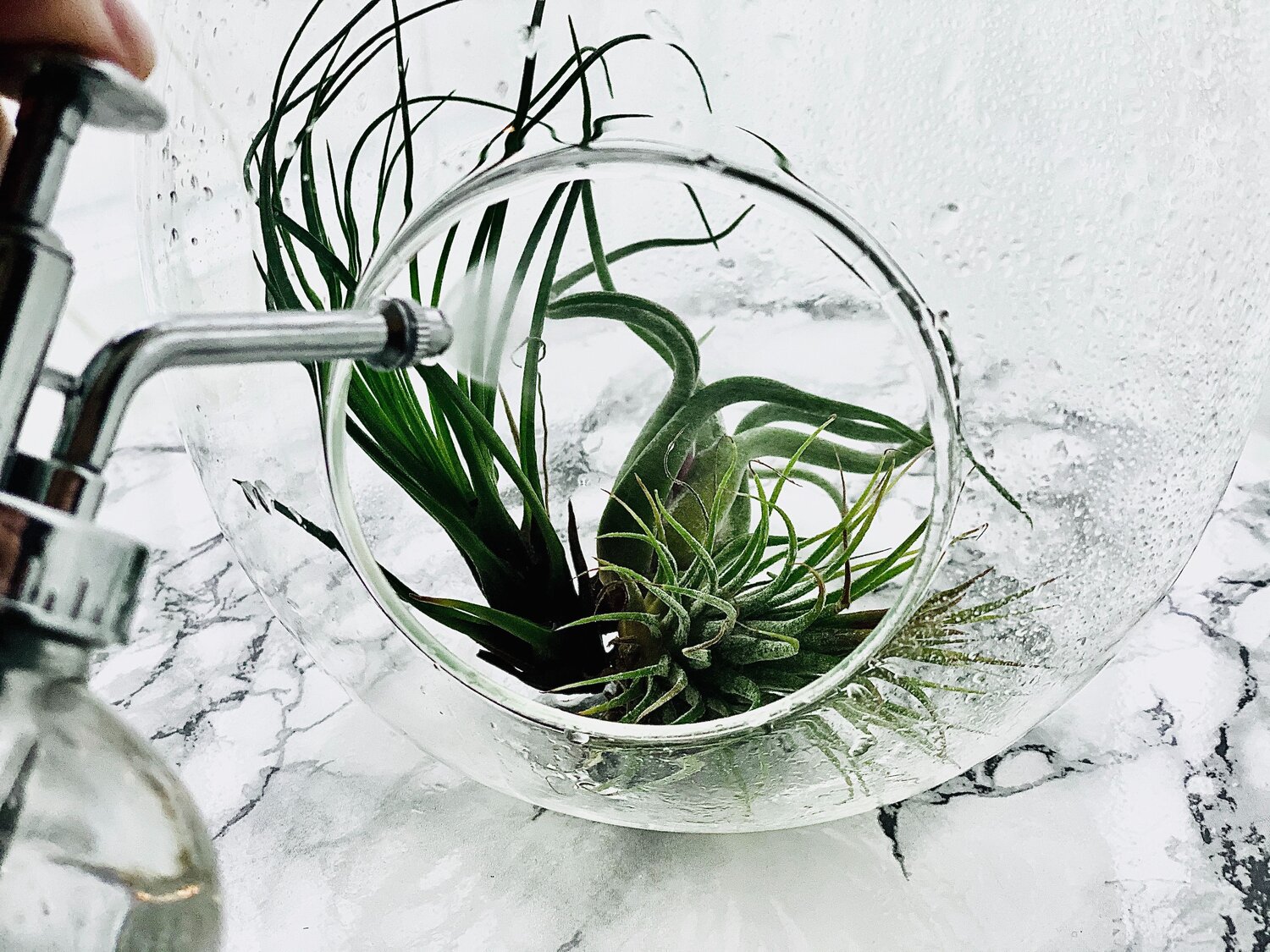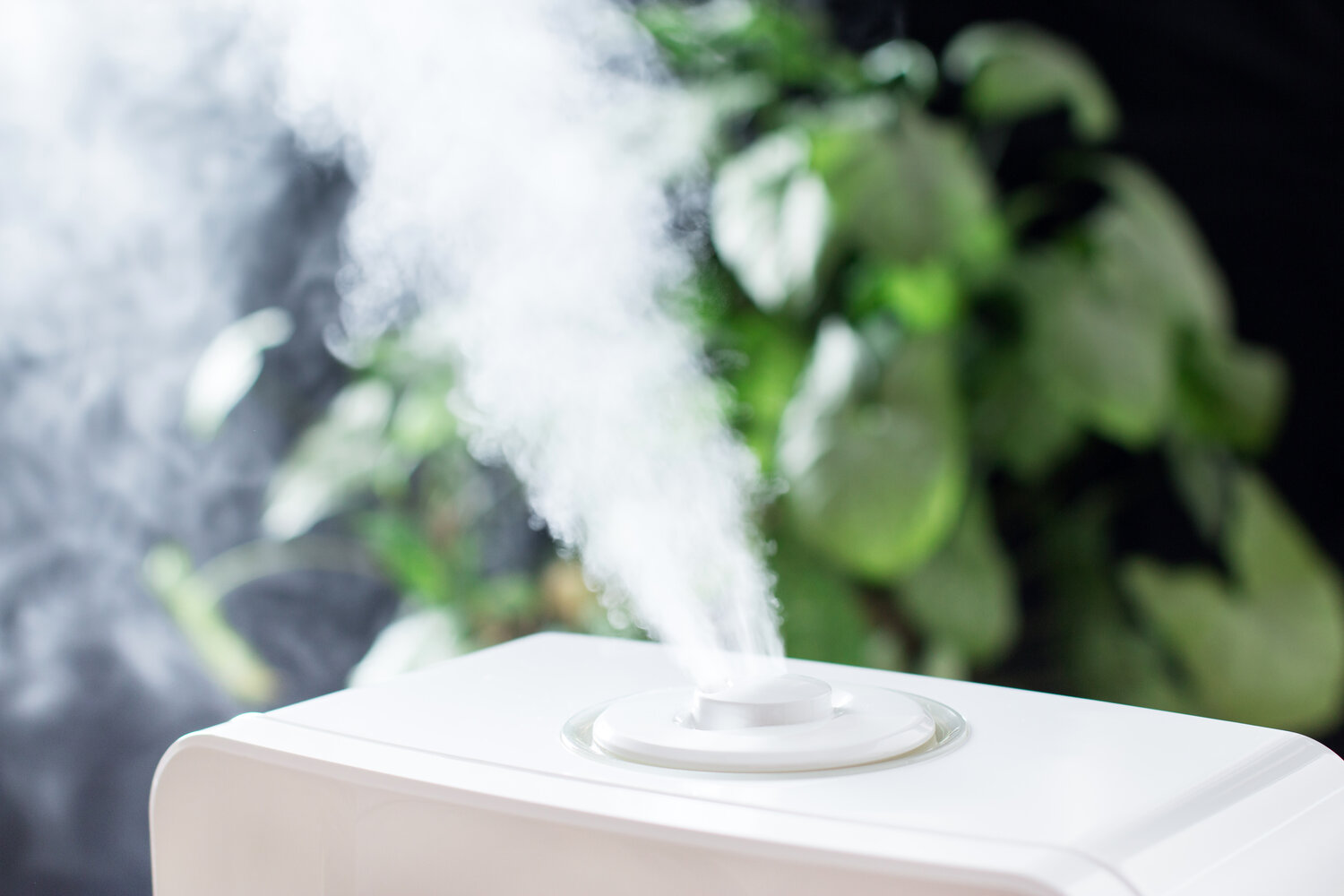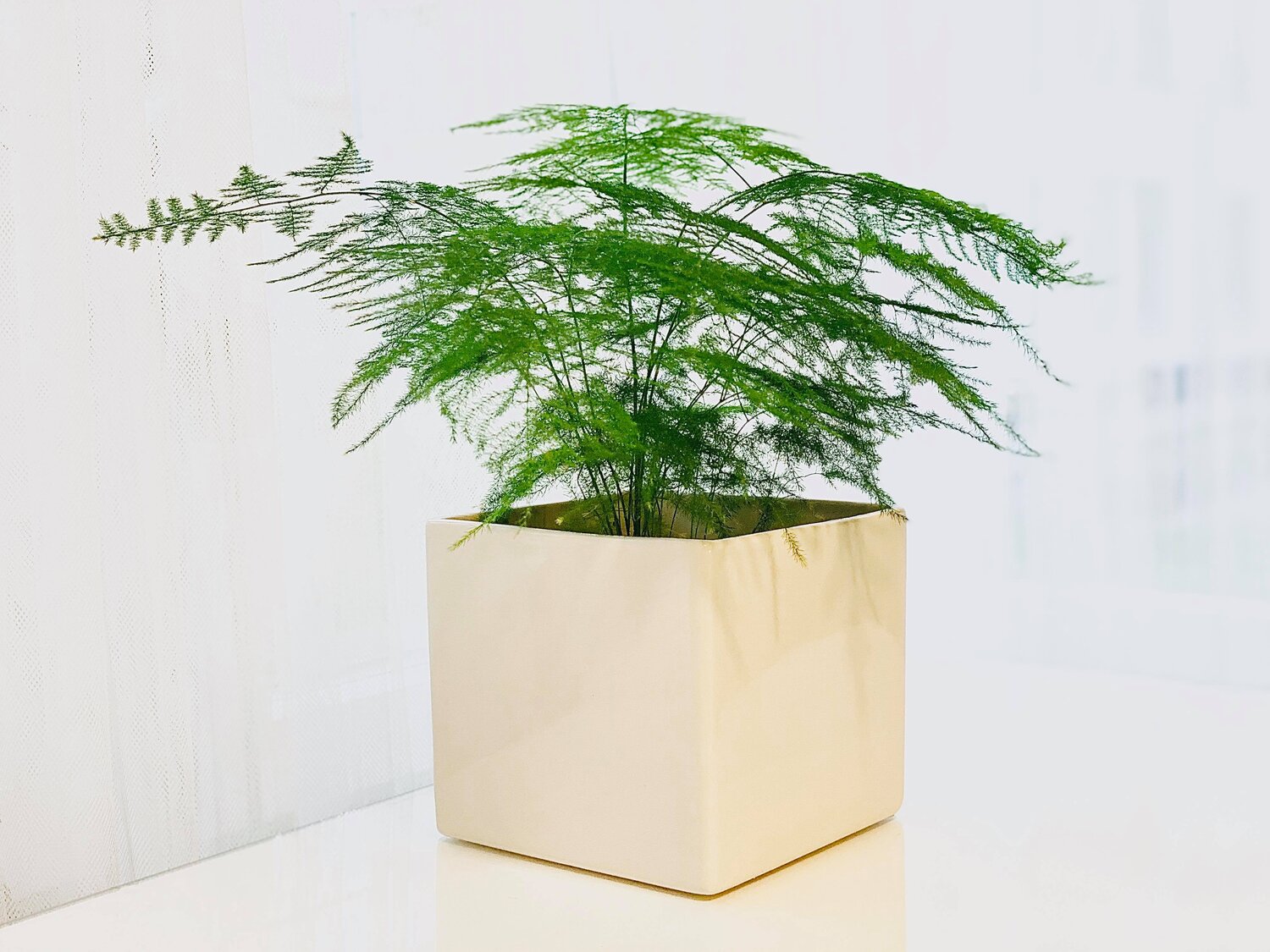Humidity
Many of our houseplants come from very humid climates, and don’t really appreciate the dry indoor air. This is especially true for plants that come from tropical and sub-tropical regions like orchids, ferns, air plants and monsteras.
Here are a few signs that your plant is suffering from air that is too dry, and what you can do about it.
Signs that the air is too dry for your plant
Dry, browning leaf tips and edges despite avoiding under- and overwatering
Curled leaves

What you can do to increase humidity
Spritzing
The most common way to increase air humidity around your plants is spritzing them. However, this is not very efficient - some even argue that it has no effect at all. To increase humidity levels by spraying your plants, you probably need to do it several times a day.
However, epiphytes and ferns do benefit from spritzing since they can absorb water through their leaves.

Room humidifier
Having a room humidifier can be beneficial both for your plants as well as for you. Humidifiers can help you with dry skin, dryness in airways, cracked lips and more. Indoor humidity should be around 30-50% and never above 60%.

Pebble tray
Fill a tray with small stones, perlite, or perhaps some gravel. Pour water over it so it covers about half of the stones - the upper part needs to be dry. Put the plant on the tray and it will be happy with the higher humidity that will arise as the water evaporates. Remember to fill the tray with new water every now and then, and also make sure you don’t let the pot sit directly in the water, which can cause root rot.

Group them together
Plants release water through their leaves. By grouping your plants together you can create a humid microclimate - very beneficial for the plants. However, before grouping them, make sure that they like the same type of light and also that they are all plants that enjoy humid conditions.
Plants with thin leaves are more sensitive to dry air than succulents. — Planta tips

For the plant nerd
This is how it works
Plant transpiration is a process where water moves through the plant and evaporates through pores in the leaves. These pores are also called stomata and consist of two cells.
The stomata can open and close, to regulate how much the plant transpires.
During transpiration the plant
Admits CO2 (carbon dioxide) - which it needs for photosynthesis
Releases O2 (oxygen)
Cooling down the leaves in extreme temperature by evaporating water
Enables flow of nutrients from roots to the shoots
Transpiration increases when
Temperature is optimum
There is a good supply of water
The plant has sufficient light
Transpiration decreases when
Temperatures gets extreme, both low and high
The internal water level in the plant is too low
Darkness
When the air is too dry
When the sun shines on the plant, water starts to evaporate from the leaves, leading to the plant pulling more water from the stem and roots towards the leaves.
In dry air, the transpiration increases and water evaporates even quicker from the leaves than it would in normal humidity levels. Thin leaves are very efficient at transporting water, which leads to the water evaporating faster from the leaves than the plant can replace it from the roots and stem - causing the leaves to dry up and get crispy. Therefore, the thinner the leaf is, the greater the need for higher humidity. Plants that have thick leaves or are covered with hair, like succulents, are not as sensitive to dry air.
